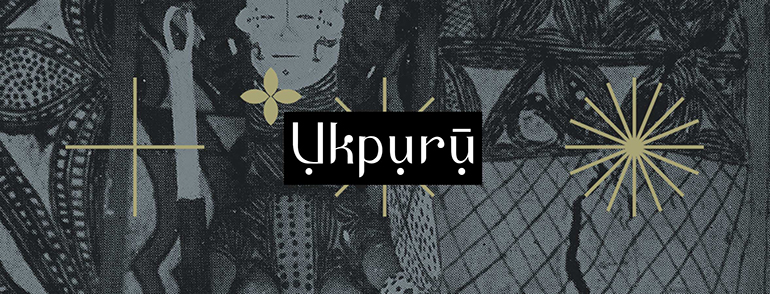
The approach to the Long Ju-Ju is through dense bush, which gradually becomes thicker and thicker until one arrives at the entrance of a deep oval-shaped pit, seventy feet deep, sixty yards long, and fifty yards wide. One then climbs down the precipitous sides of the rock into a narrow gorge and into running water, up which one wades, passing under two fences, until one finally comes to a place where the water comes out of the solid rock in two big streams, which unite below a small island, on which are two altars, one made of many trade guns, stuck muzzle downwards into the ground and topped with skulls, the other being of wood and supporting more skulls, bones, feathers, blood, eggs, and other votive offerings to the Ju-Ju, including the head of the last victim. Over the rock, where is the source of the water, is a roof of human skulls with a curtain, the top part of which is composed of clothes and the lower part of native matting, screening the rock and hanging just short of the water's edge. The lower portions of the rock composing the other side of this crater are draped with mats only. On the left of the entrance, centrally situated, and opposite the island, has been hewn out of the rock a flat-topped ledge for sacrificial purposes. The water, about twelve inches deep, is full of tame grey-coloured fish, about two feet in length, with long suckers and glaring yellow eyes, which have a most bizarre appearance as they glide noiselessly through the clear water in the dim light of this charnel-house of fetish lore, which is roofed with densely intertwined creepers. These fish are regarded as sacred. On the left of the exit lies another pile of human skulls and other relics of Ju-Ju rites, and on the left the last sacrifice--a white goat, trussed up in the branches of a palm tree and starving to death. The conducting of a visitor to the Ju-Ju is usually a somewhat lengthy process, and when he arrives in its proximity he is led by a circuitous route and finally marched in backwards. It would seem to be a fair estimate to put the number of pilgrims down at about five hundred annually, all of whom pay dearly for the advice or decree which is vouchsafed to them. Probably the number of human sacrifices does not reach a total of fifty per annum, while about 200 people are sold into slavery, and the remainder are allowed to go away free.
— Reuter, Daily Graphic
Location: Ibini Ukpabi, Arochukwu, Aro, Alaigbo | Date: 1902 | Credit: Reuter from a member of the Aro Field Force




